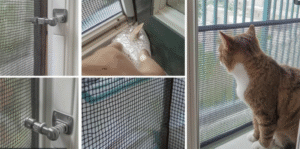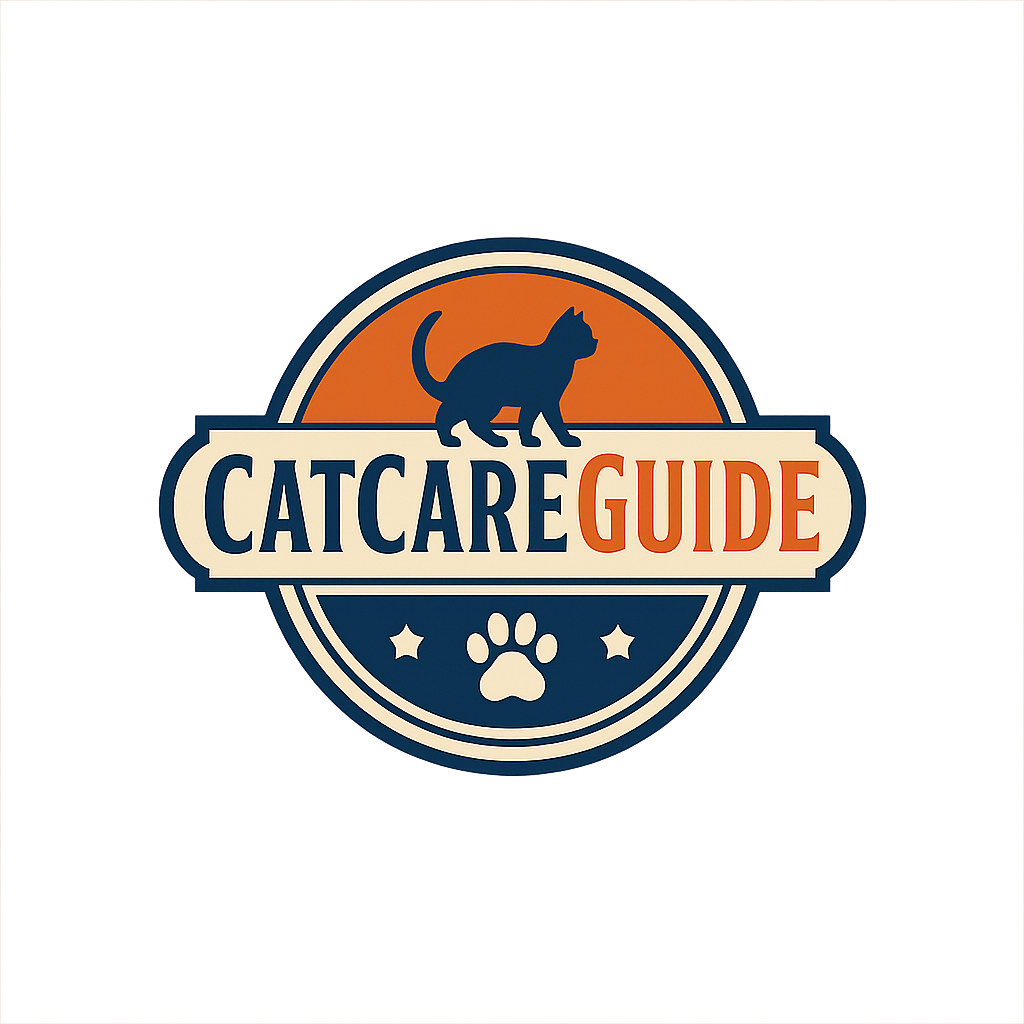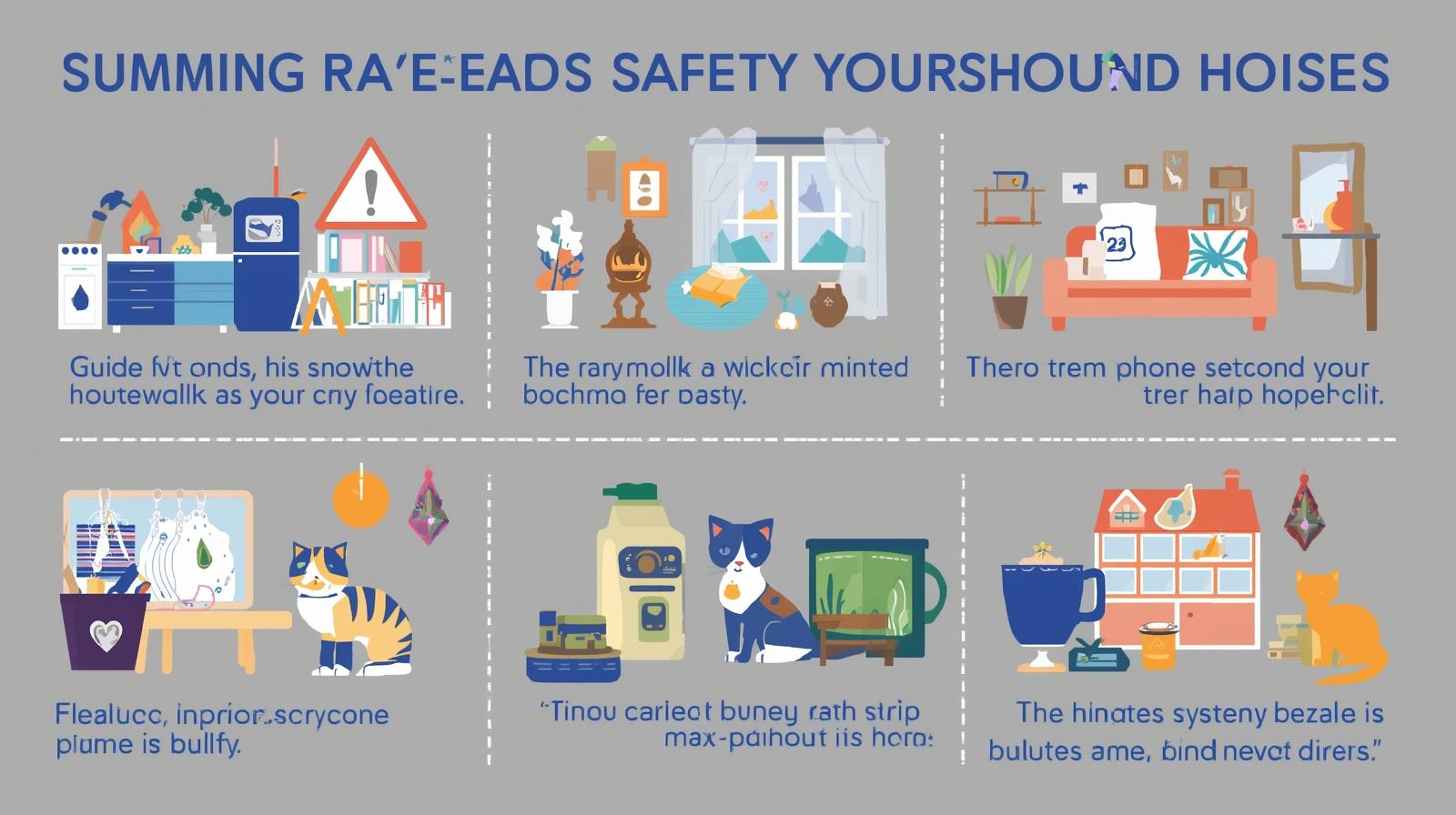Cat Safety Tips for American Homes: The Ultimate Guide
Cats are curious, adventurous, and endlessly entertaining. But that same curiosity can sometimes get them into trouble — especially in a modern American home filled with hidden dangers. From cleaning products and electrical cords to windows and plants, there are countless hazards your cat might encounter daily.
This guide will walk you through practical, proven safety measures to ensure your cat’s environment is both secure and enriching — whether you live in an apartment in New York City, a suburban house in Texas, or a cabin in Colorado.
1. Understanding Why Cat Safety Matters
Cats love to explore. They’ll climb shelves, squeeze into tiny spaces, and chew on cords or plants without realizing the risks. A single accident — such as ingesting a toxic plant or falling from a window — can result in expensive vet bills or worse.
By taking a few precautions, you can prevent accidents before they happen, giving your cat a longer, healthier, and happier life.
2. Common Household Hazards in U.S. Homes
Cleaning Products
Most American households rely on strong cleaning agents — bleach, ammonia, and disinfectants. These can be toxic to cats, especially if ingested or inhaled.
Tip: Always store cleaning supplies in a closed cabinet. Choose pet-safe cleaning alternatives labeled as non-toxic.
Toxic Plants
Many popular U.S. houseplants, such as lilies, pothos, philodendrons, and aloe vera, are dangerous to cats.
Tip: Replace them with cat-friendly options like spider plants, Boston ferns, or cat grass.
Electrical Cords
Cats, especially kittens, may chew on cords.
Tip: Use cord protectors or coat cables with bitter-tasting deterrent sprays available in most American pet stores.
Candles and Air Fresheners
Flame and fumes are serious hazards.
Tip: Opt for battery-operated candles and natural essential oil diffusers made for pet-safe environments.
3. Cat-Proofing Your Living Room
The living room is a cat’s playground — filled with tempting things to scratch, climb, or chew.
-
Secure TV stands and bookshelves: Use anti-tip brackets.
-
Hide cords: Use zip ties or plastic tubing to keep cords organized.
-
Avoid dangling blind cords: Cats may get tangled or choke.
-
Use cat-friendly furniture: Scratch posts or cat trees reduce destructive behavior.
Pro Tip: Sprinkle catnip on scratching posts to redirect your cat’s curiosity!
4. Kitchen Safety for Cats
The kitchen holds many temptations — and dangers.
Foods Toxic to Cats
Even small amounts of the following can be harmful:
-
Onions and garlic
-
Chocolate
-
Grapes and raisins
-
Caffeine
-
Alcohol
Tip: Keep food sealed and out of reach. Wipe countertops immediately after cooking.
Appliances and Trash
Cats love exploring dark spaces — like ovens and dishwashers.
Tip: Always check before closing appliances and use pet-proof trash cans with secure lids.
5. Bathroom Safety
Bathrooms can be surprisingly dangerous.
-
Toilets: Keep lids closed — cats can fall in and drown.
-
Medications: Store human and pet meds in cabinets.
-
Essential oils and diffusers: Many oils like eucalyptus and tea tree are toxic to cats.
Tip: Use non-slip mats and close drains when not in use.
6. Bedroom Hazards
Bedrooms may seem harmless, but hidden dangers lurk.
-
Small objects: Hair ties, jewelry, and rubber bands can cause choking.
-
Electric blankets: Cats might chew cords or overheat.
-
Candles and incense: Avoid — or replace with flameless versions.
Pro Tip: Provide a cozy cat bed or heated pad to discourage your feline from climbing onto risky furniture.
7. Cat-Proofing Windows and Balconies
Window Safety
Every year, U.S. vets treat “high-rise syndrome” — cats injured from falls.
Tip: Use secure window screens or guards on all open windows.
Balcony Safety
If you have a balcony, install catio-style enclosures or mesh fencing. These allow outdoor fun without danger.

8. Safe Outdoor Exploration
Outdoor freedom comes with risks — cars, predators, or diseases.
Alternatives:
-
Leash Training: Use a harness to take your cat on walks.
-
Catio: A screened outdoor area offering sun and fresh air safely.
-
Microchipping: Essential for identification in the U.S.
9. Choosing Safe Toys and Accessories
Not all cat toys are safe. Some imported ones may contain small detachable parts or toxic dyes.
Best Practices:
-
Choose BPA-free, non-toxic toys from reputable U.S. brands.
-
Avoid yarn or string without supervision.
-
Replace broken toys immediately.
10. Safe Cleaning Habits
Even routine cleaning can expose cats to chemicals.
-
Avoid bleach-based cleaners.
-
Ventilate rooms after mopping or spraying disinfectants.
-
Use baking soda and vinegar as safe, natural alternatives.
SEO Keyword Tip: Pet-safe cleaning for American homes.
11. Fire Safety and Emergency Preparedness
In case of fire or evacuation, have a cat safety plan.
Checklist:
-
Pet carrier near the exit
-
Fire sticker noting pets inside
-
Microchip with up-to-date contact info
-
Emergency vet number posted
Pro Tip: Keep a small “cat go-bag” with food, medications, and comfort items.
12. American Climate Considerations
From snowy winters to humid summers, U.S. climates vary greatly.
-
Winter: Keep cats indoors; frostbite can occur quickly.
-
Summer: Prevent overheating; offer cool water and shade.
-
Hurricanes or wildfires: Prepare evacuation plans specific to your region.
Read More: Top 10 Feline Diabetes Symptoms You Shouldn’t Ignore
13. Safe Sleeping and Hiding Spots
Cats love small, enclosed spaces. Ensure they’re hazard-free.
-
Avoid dryer drums and plastic bags.
-
Create safe zones with soft blankets and enclosed cat beds.
-
Provide vertical hideouts — like cat shelves or towers.
14. Social and Mental Safety
A safe home isn’t just physical — it’s emotional.
-
Offer interactive toys to prevent boredom.
-
Use pheromone diffusers to reduce stress.
-
Ensure quiet, safe zones for alone time.
15. Seasonal Hazards in U.S. Homes
-
Halloween: Keep chocolate and decor out of reach.
-
Christmas: Avoid tinsel, ribbons, and toxic poinsettias.
-
Fourth of July: Fireworks cause stress — keep cats indoors in a quiet room.
16. Choosing Pet Insurance and a Vet
Emergencies happen — and U.S. vet care can be costly.
Tips:
-
Research pet insurance plans that cover accidents and illness.
-
Choose a local emergency vet and save their number.
-
Schedule annual wellness visits to detect issues early.
17. DIY Cat-Safe Home Projects
Love crafting? Make your own safety upgrades:
-
Build DIY scratching posts using sisal rope.
-
Create window perches with secure brackets.
-
Use baby gates to block unsafe areas.
18. Teaching Family Members Safety Rules
If you live with kids or guests:
-
Explain don’t feed the cat table scraps.
-
Close doors and windows securely.
-
Teach gentle handling and respect for boundaries.
19. Tech Gadgets for Cat Safety (U.S. Brands)
Modern American homes can benefit from pet tech:
-
Pet cameras (Furbo, Petcube) for monitoring.
-
Automatic feeders for portion control.
-
Smart collars with GPS tracking.
-
Motion sensors to detect escapes.
20. Final Checklist: Your Cat Safety Audit
✅ Secure windows and cords
✅ Remove toxic plants
✅ Store cleaners and meds
✅ Cover trash bins
✅ Create safe sleeping areas
✅ Use cat-safe decor and candles
✅ Have a vet plan ready
Conclusion
Keeping your cat safe at home doesn’t mean restricting their fun — it means creating a secure, enriching space that satisfies their instincts without risk. Whether you’re cat-proofing a city apartment or a suburban house, the same rule applies: safety first, love always.
A cat-safe home is a happy home — one where your feline can explore, nap, and play without danger. Follow these steps, stay observant, and your furry friend will thrive for years to come.

